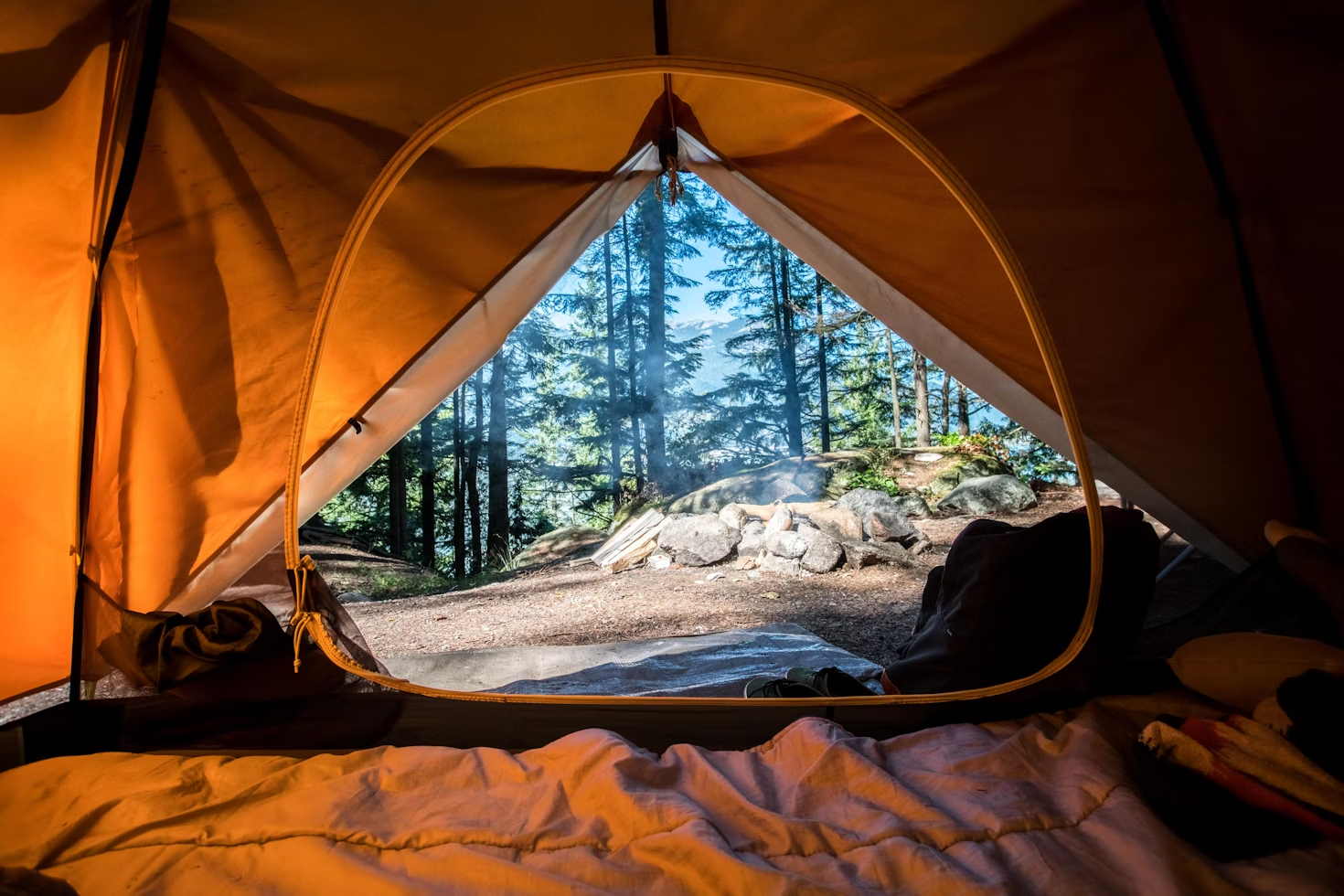Can Asbestos Ruin Your Outdoor Adventure?

The great outdoors has long been a sanctuary for those seeking adventure and tranquility. From serene forests to rugged mountains, nature offers an escape from the complexities of modern life. However, the intersection of human activity and pristine environments can sometimes lead to unexpected hazards.
As we explore the great outdoors, it’s important to stay alert for any hidden dangers that may be lurking. One such concern that has recently gained attention is the presence of asbestos in outdoor recreational areas.
This naturally occurring mineral, once prized for its heat-resistant properties, now poses significant health risks when disturbed.
Understanding these dangers is crucial for maintaining the safety and enjoyment of our outdoor experiences. This article explores how asbestos might impact your camping adventures and what you need to know to protect yourself and your loved ones.
Understanding Asbestos
Asbestos, a group of naturally occurring silicate minerals, consists of long, thin fibrous crystals. Its unique structure grants exceptional resistance to heat, electricity, and chemical corrosion. Historically, industries embraced asbestos for insulation, fireproofing, and strengthening materials.
However, its widespread use came at a devastating cost to human health. When disrupted, asbestos emits minuscule fibers that, upon inhalation, can result in severe respiratory illnesses and malignancies.
The danger lies in asbestos’ friability—its ability to crumble and release fibers into the air. When inhaled, these fibers can lodge deep into the lungs and cause fatal health complications.
While non-friable asbestos remains relatively stable, friable forms pose significant risks. Understanding this distinction is crucial for assessing potential hazards.
Potential Asbestos Exposure in Outdoor Settings
Asbestos lurks in unexpected corners of our natural playgrounds. Historic structures dotting campsites often harbor this silent threat within their aging walls and roofs. These remnants of the past, while charming, may conceal dangerous fibers.
Nature itself can be a source of asbestos exposure. Certain geological formations, particularly serpentine rocks, naturally contain asbestos minerals. When disturbed, these formations release fibers into the air and surrounding soil.
Campgrounds with a history of industrial activity may have contaminated soil. Years of weathering and human activity can unearth buried asbestos, making it a potential hazard for unsuspecting campers.
Even your trusty old camping gear might pose a risk. Vintage equipment, especially items made before the 1980s, may contain asbestos in their heat-resistant components. That beloved antique camping stove could be harboring more than just memories.
Understanding these potential sources empowers outdoor enthusiasts to make informed decisions. By recognizing where asbestos might hide, we can better protect ourselves while still embracing the beauty of the great outdoors.
Specific Camping Scenarios with Asbestos Risk
Older structures in camping areas pose significant asbestos risks. Buildings constructed before the 1980s often contain asbestos in insulation, flooring, and roofing materials.
Moreover, older trailers and motorhomes could have asbestos in their vinyl tiles or insulation for pipes and stoves. Even fire-resistant gloves, clothing, or the insulation in your tent or sleeping bag could be culprits. If you’re unsure about the age or materials in your camping gear, it’s best to err on the side of caution.
Campers should be wary of damaged walls, ceilings, or floors in old cabins. Avoid disturbing suspicious materials, and report any concerns to camp management. Proper ventilation is crucial; open windows when possible. If renovations are ongoing, consider alternative accommodations. Always follow posted warnings and restricted area signs.
Using communal facilities (bathrooms, showers)
Communal facilities in campgrounds can harbor hidden asbestos hazards. According to Asbestos.com, asbestos insulation was commonly applied to pipes, boilers, ducts, and tanks. There is a high chance of finding a layer of asbestos wrap insulation surrounding very old asbestos cement pipes.
Deteriorating tiles or wall panels in these areas could release fibers if damaged. Exercise caution when using these facilities, especially if they appear outdated or poorly maintained. Avoid direct contact with suspicious materials. Report any visible damage or wear to campground staff immediately. If possible, use personal camping shower facilities or more modern amenities.
Signs of Potential Asbestos Presence
Camping areas with known asbestos risks often display warning signs or notices. These may be posted at trailheads, campground entrances, or near specific structures. Such notifications typically outline potential hazards and guide safe practices.
Park rangers and campground staff serve as valuable resources for asbestos-related information. They often possess knowledge about local geological formations and historical land use that may indicate the presence of asbestos. Engaging with these professionals can provide insights into areas of concern and recommended precautions.
Geological indicators of natural asbestos include the presence of serpentine rock, which often contains asbestos fibers. This rock type is characterized by its green, blue-green, or gray coloration and slick, waxy appearance.
Areas with exposed bedrock or disturbed soil in regions known for serpentine formations warrant extra caution. Mineral veins in rock outcroppings may also indicate a potential asbestos presence, particularly in metamorphic or ultramafic rock formations.
Legal Aspects of Asbestos Exposure While Camping
Campground owners bear significant legal responsibility for asbestos-related hazards on their premises. This duty encompasses regular inspections, remediation, and providing adequate warnings about potential asbestos-containing materials.
Failure to meet these obligations can result in premises liability claims. Courts consider factors such as the owner’s knowledge of the hazard and efforts to mitigate risks when determining liability.
Government regulations for public lands are stringent. Federal agencies like the National Park Service adhere to the Asbestos Hazard Emergency Response Act guidelines. They must conduct regular environmental assessments and implement risk-mitigating strategies. Violations can result in substantial fines and mandatory remediation orders.
Campers have the right to a safe environment free from undisclosed asbestos hazards. They are entitled to access public records regarding asbestos assessments in camping areas. In cases of negligent exposure, campers may have grounds for filing asbestos lawsuits to recover damages related to medical monitoring or treatment.
If you suspect asbestos exposure, document the incident thoroughly. Report it to campground management and the relevant authorities. Seek medical attention and inform your healthcare provider about the potential exposure. Consult an experienced law attorney to understand your legal options and evidence preservation requirements.
According to TorHoerman Law, the period for filing personal injury claims regarding asbestos-related diseases begins at diagnosis. And it usually spans from one to six years. In cases involving wrongful death, the statute of limitations commences on the date of the patient’s death. However, variations in time limits are observed among different states.
Mesothelioma: A Grave Concern
Mesothelioma, a rare and aggressive cancer primarily caused by asbestos exposure, warrants special attention. This malignancy affects the mesothelium, the protective lining of internal organs.
Every year, around 3,000 new cases of mesothelioma are diagnosed in the United States, painting a somber picture. Each year, approximately 2,500 individuals lose their lives to this devastating disease, resulting in a significant mortality rate.
Symptoms often appear decades after exposure, complicating an early diagnosis. Common signs include chest pain, persistent coughing, and shortness of breath. Diagnosis typically involves imaging studies, blood tests, and tissue biopsies.
Treatment options, while limited, may include surgery, chemotherapy, and radiation therapy. Ongoing research into immunotherapy and targeted treatments offers hope for improved outcomes in mesothelioma management.
FAQs
1. Is any camping trip guaranteed to be asbestos-free?
No adventure is entirely risk-free, but with a little awareness, you can minimize exposure. Focus on well-maintained campgrounds and avoid disturbing suspicious materials like old structures or crumbling rocks. When in doubt, ask park rangers!
2. What should I do if I suspect asbestos exposure while camping?
Don’t fret, but be proactive. Take pictures of the area, report it to campground staff, and see a doctor. Early detection is key for asbestos-related illnesses, even if symptoms take years to appear. Consider legal counsel to understand your options.
3. Are there any telltale signs of asbestos at a campsite?
Keep an eye out! Warning signs are often posted, and park rangers can offer local knowledge. Watch for damaged buildings, outdated facilities, or specific rock formations with a green, blue-green, or gray hue (serpentine rock). These might indicate natural asbestos.
All things considered, the great outdoors beckons with its promise of adventure and tranquility. While the potential for asbestos exposure can be a concern, with knowledge and vigilance, we can still embrace the wilderness safely.
By understanding where asbestos might lurk and taking necessary precautions, we can turn camping adventures into memories, not medical worries. Responsible campground management and informed campers working together can ensure everyone enjoys a safe and healthy outdoor experience.




